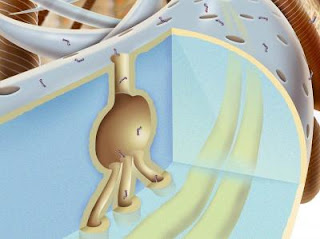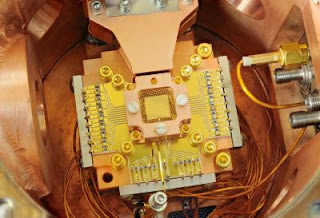“The nation that controls magnetism will control the universe,” famed fictional detective Dick Tracy predicted back in 1935. Probably an overstatement, but there’s little doubt the nation that leads the development of advanced magnetoelectronic or “spintronic” devices is going to have a serious leg-up on its Information Age competition. A smaller, faster and cheaper way to store and transfer information is the spintronic grand prize and a key to winning this prize is understanding and controlling a multiferroic property known as “spontaneous magnetization.”
Now, researchers with the U.S. Department of Energy (DOE) Lawrence Berkeley National Laboratory (Berkeley Lab) have been able to enhance spontaneous magnetization in special versions of the popular multiferroic material bismuth ferrite. What’s more, they can turn this magnetization “on/off” through the application of an external electric field, a critical ability for the advancement of spintronic technology.
“Taking a novel approach, we’ve created a new magnetic state in bismuth ferrite along with the ability to electrically control this magnetism at room temperature,” says Ramamoorthy Ramesh, a materials scientist with Berkeley Lab’s Materials Sciences Division, who led this research. “An enhanced magnetization arises in the rhombohedral phases of our bismuth ferrite self-assembled nanostructures. This magnetization is strain-confined between the tetragonal phases of the material and can be erased by the application of an electric field. The magnetization is restored when the polarity of the electric field is reversed.”
In this new research, Ramesh and his group have deployed epitaxial strain to create bismuth ferrite films that are a mix of highly distorted rhombohedral and tetragonal phases, in which the rhombohedral phases are mechanically confined by regions of the tetragonal phases. The magnetic moments that spontaneously arise in these special films occur within the distorted rhombohedral phase rather than at the phase interfaces and are significantly stronger than the magnetic moment that occurs in conventional bismuth ferrite.
“Normal bismuth ferrite films typically show a spontaneous magnetization of 6 to 8 electromagnetic units/cubic centimeter, which is too small for applications in a real device,” says Qing (Helen) He, who was the lead author on the Nature Communications paper. “By setting our bismuth ferrite films in this special mixed phase state, we can enhance the spontaneous magnetization to approximately 30 to 40 electromagnetic units/cubic centimeter, which is large enough to be used in real devices.”
Ramesh, He and their co-authors discovered that the enhanced spontaneous magnetization in their special bismuth ferrite films can be controlled through the use of an external electric field without any noticeable current passing through the film. The ability to turn the magnetization on/off in these films opens the door to their use in spintronic devices as the on/off states can serve as the 1 and 0 states of data storage. That these on/off states can be achieved without an electric current is a significant added advantage.
“In the typical magnetic memory device, the magnetic state of the material is set by an external magnetic field that is generated from the current flowing through an electromagnet,” says He. “Current flow needs to be driven with a lot of power and at the same time generates waste heat. Therefore, using an electric field instead of a current to control the magnetization saves energy.”
The discovery that the magnetization of these special bismuth ferrite films can be controlled with an electric field was largely made possible by the use of PhotoEmission Electron Microscopy (PEEM) at Berkeley Lab’s Advanced Light Source (ALS), a DOE Office of Science national user facility for synchrotron radiation. The PEEM3 microscope at ALS beamline 11.0.1 is one of the world’s best instruments for studying ferromagnetic and antiferromagnetic nanoscale domains.
In addition to Ramesh and He, other co-authors of the paper “Electrically Controllable Spontaneous Magnetism in Nanoscale Mixed Phase Multiferroics” were Ying-Hao Chu, John Heron, Seung-Yeul Yang, Wen-I Laing, Chang-Yang Kuo, Hong-Ji Lin, Pu Yu, Chen-Wei Liang, Robert Zeches, Wei-Chen Kuo, Jenh-Yih Juang, Chien-Te Chen, Elke Arenholz and Andreas Scholl.
This research was primarily supported by the DOE Office of Science.
Lawrence Berkeley National Laboratory is a U.S. Department of Energy (DOE) national laboratory managed by the University of California for the DOE Office of Science. Berkeley Lab provides solutions to the world’s most urgent scientific challenges including sustainable energy, climate change, human health, and a better understanding of matter and force in the universe. It is a world leader in improving our lives through team science, advanced computing, and innovative technology. Visit our Website at www.lbl.gov
For more information on the research of Ramamoorthy Ramesh, visit his Website at www.lbl.gov/msd/investigators/investigators_all/ramesh_investigator
Lynn Yarris (510) 486-5375 lcyarris@lbl.gov

































